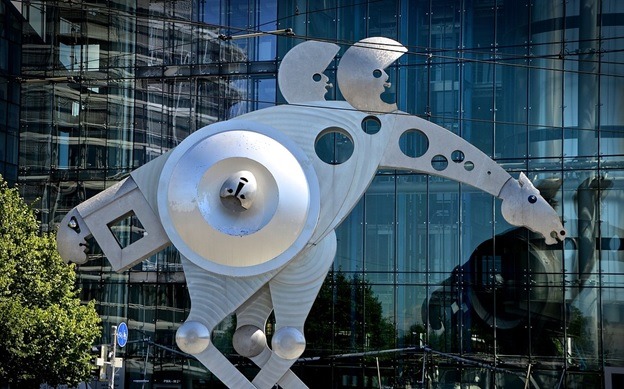For centuries, metal sculptors have been creating works of art out of metal. This kind of sculpture is different from the usual clay or marble sculptures as it employs metals such as tin, bronze, or gold to portray a message. Over the course of millennia, metal art sculptures shifted from copper and bronze to gold and silver, iron, and high-quality steel. Today, artists and studios may choose from a wide range of metals and designs.
There are several ways to create a metal sculpture, including casting, sculpting, carving, and welding. The findings might vary depending on which method is employed. Metalwork is distinct from other mediums in that it can withstand the test of time and alter through time via corrosion, oxidation, or the formation of a patina.
Discovering the Motivation Behind the Creation of the Sculpture
It is not uncommon for sculptures to be used to convey a message or memorialize a significant event or person. Every item has a reason and a goal, that much is evident. It is typical for an artist or designer to have an idea or plan in place before commencing the sculpture-making process. There is a philosophy or feeling behind even busts and monuments. For example, Michelangelo could have sculpted David in a variety of positions. Instead, he was propelled by one of his own creations.
From the Beginning to the End: The Metal Sculpting Process
So, what are the steps involved in turning a concept into a tangible piece of art? Sketches will be drawn up by the designer or artist to bring the concept to life. When you have a rough drawing, construct a little clay model and test it out in three dimensions to make sure everything looks right. Creating a full-scale mold is necessary if the casting is to be employed. If not, then each component must be crafted and assembled. While ideas and drawing might take some time, the true effort comes when the sculpting process begins. A sculpture may take weeks or even years to complete, depending on the style, procedure, and intricacy.
Metal Sculptures for Indoors vs. Outdoors
One of the most important things to consider for metal sculpture is the location of the sculpture before making a decision on a design. If you’re wondering why, this is because when exposed to the elements, metal may alter its properties. Consider the weather and the location when deciding on a finish for the metal if you want to put it outdoors. It is important to remember that certain sculptures are designed to alter and respond to the environment, such as rust, patina, and oxidation. The most recommended metals to use outdoors are aluminum, stainless, and galvanized steel, and red metals such as bronze, brass, and copper.
From the Studio to Your House: The Making of a Product
What is the process of making a metal sculpture? Getting to work is the next logical step after the brainstorming and designing phases. Here are some of the things you need to learn more about custom sculptures to create a beautiful sculpture project:
STEP 1: Metal is cut and bent into the desired shapes and sizes using CNC technology. A fiber-optic laser machine is typically required to cut the metal, where nitrogen or oxygen is utilized depending on the thickness of the metal. Having a precise cut is made possible because of this. A hydraulic bending machine is utilized when an item has to be bent or curved. Since a mistake of one degree might result in an error, it is very crucial to have a highly-trained operator.
STEP 2: The components are now ready to be put together. High-quality welders with extensive experience in many forms of welding are required for this procedure (mainly TIG and MIG). They must also be familiar with the various gases used in welding, as well as when and how they are combined. In terms of quality, resistance, longevity, and uniformity, this will provide them with the best weld seams they can get.
STEP 3: After that, the laminating and polishing procedures are carried out to complete the project. If you don’t have an experienced technician, things might go awry quickly. There is a risk that the weld joints may break, the metal sheet will distort, and the finishing process would be difficult.
STEP 4: To complete the item, it must be assembled and refined. In order to remove any blemishes or imperfections, putty is employed. Afterward, it is sanded using sandpaper of different grits to provide a flawless surface. Afterward, the sculpture is given a coat of priming and then painted.
STEP 5: The last step is for metal sculptures to be packaged and dispatched in a manner that ensures their safe arrival at their final destination.

